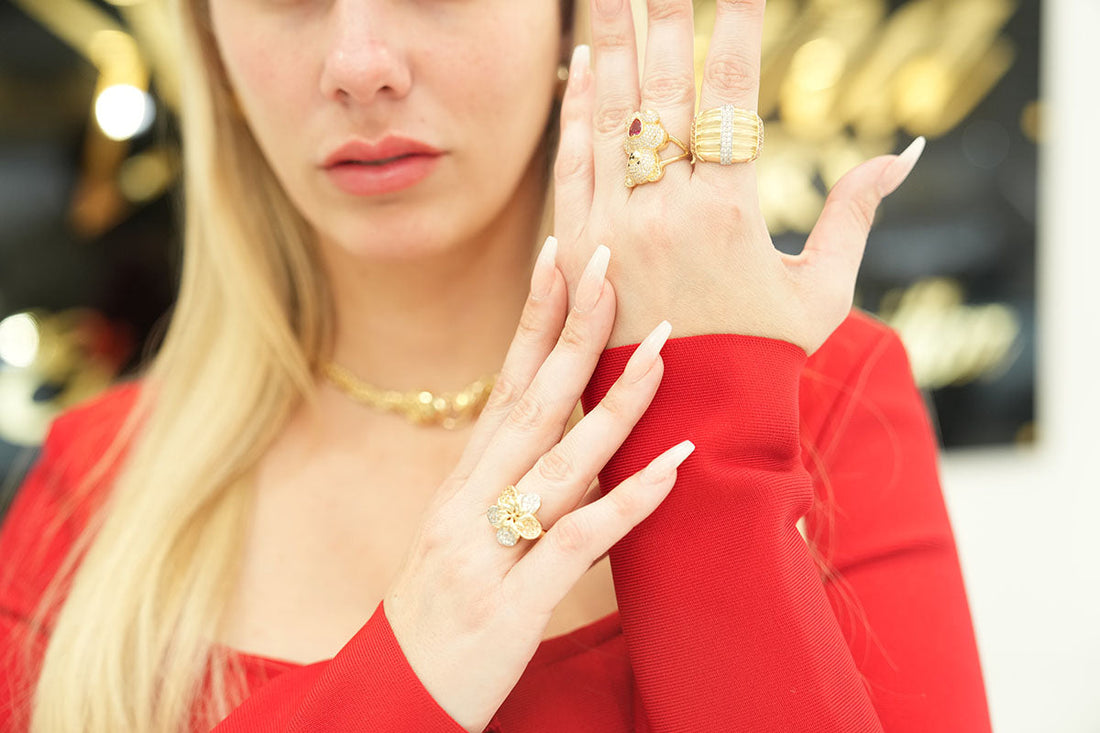
Cultural Significance of Jewelry Around the World
Share
Imagine receiving a jade ring in China, a gold necklace in Egypt, or a silver bracelet in Mexico. To you, they may seem like beautiful pieces, but for those who live in these regions, each piece holds deep cultural significance. Want to uncover the secrets behind jewelry around the world? Keep reading—you might be surprised.
Why the Cultural Significance of Jewelry Matters
Jewelry is more than decoration: it tells stories, preserves traditions, and conveys symbolism. In every culture, a piece can represent love, power, protection, spirituality, or social status. Understanding this helps us value each piece more deeply and respect the history it carries.

Jewelry in Asia: Symbols of Harmony and Spirituality
China: Jade, More Than a Gemstone
In China, jade is considered more valuable than gold. This stone symbolizes purity, wisdom, and spiritual protection. Chinese families often gift jade amulets to newborns to safeguard them from harm.
India: Gold for Prosperity
In India, gold is synonymous with wealth and good fortune. Brides wear large amounts of gold jewelry at weddings, not only to look beautiful but also because it is believed to attract prosperity and blessings for the marriage.
Jewelry in Europe: Elegance and Status
France: Pearls for Sophistication
Pearls have long been a symbol of elegance in France. Wearing them demonstrated refined taste and indicated membership in the upper social classes.
Italy: Amulets Against the Evil Eye
In Italy, small red horn-shaped pendants, called “corni,” are commonly worn. These charms are believed to protect against the evil eye and bring good luck.
Jewelry in the Americas: Ancestral Roots and Cultural Pride
Mexico: Silver with History
Mexico is famous for its silver, especially in regions like Taxco. Mexican silver jewelry is not only beautiful but also reflects centuries of artisanal tradition and cultural price
United States: Engagement Rings
In the United States, engagement rings are more than just accessories. They symbolize eternal love and commitment—a tradition that has endured for generations.

Jewelry in Africa: Identity and Community
Egypt: Gold Jewelry for Eternity
The ancient Egyptians believed that gold jewelry helped the deceased reach eternal life. That’s why pharaohs were buried with vast amounts of gold and precious pieces.
Maasai (Kenya and Tanzania): Beaded Necklaces
For the Maasai, colorful beaded necklaces signify age, social status, and personal achievements. Each color carries meaning: red symbolizes bravery, blue represents energy, and white stands for purity.
What Can We Learn from the Cultural Significance of Jewelry?
Jewelry serves as a bridge between past and present. It tells us how people live, what they value, and how they express their emotions. The next time you see a piece of jewelry, consider the story it might be telling.
Connect with the World Through Jewelry
Now that you know more about the cultural significance of jewelry, you’ll surely see every ring, necklace, or bracelet with new eyes. At Ventura Jewelry, we believe each piece should have a purpose: not just to adorn, but to tell a story.
If you want to discover jewelry that reflects your personality while connecting you to cultures around the world, you know where to find it.
Jewelry is more than an accessory—it’s a window to other cultures. And perhaps, the next time you wear a piece, you’ll also be carrying a piece of the world with you. That’s why at Ventura Jewelry, we have the piece that makes you shine.

